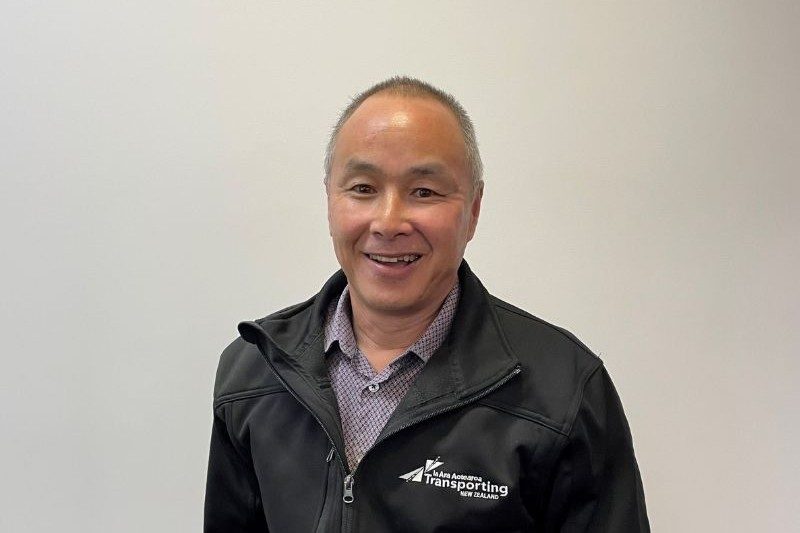Modern Fleet Management – Safety, Efficiency and Sustainability
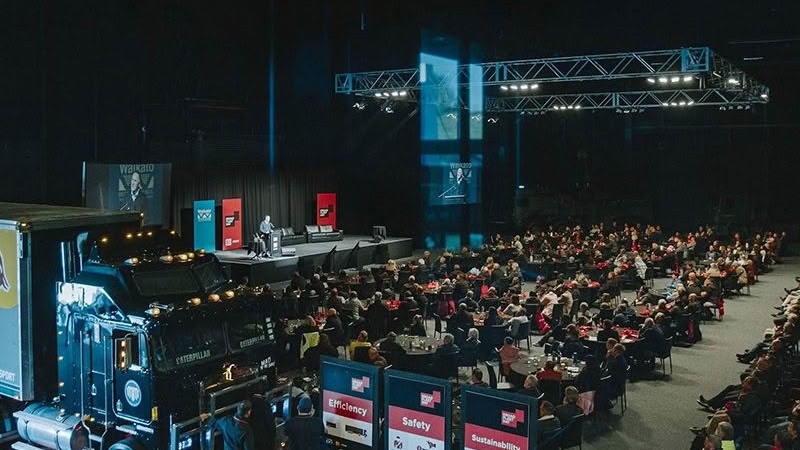
Transport industry professionals discuss the latest trends, opportunities and challenges, focusing on three crucial aspects of modern fleet management: safety, efficiency and sustainability.
EROAD held its ninth annual Fleet Day event at Hamilton’s Mystery Creek in August, attracting more than 1200 fleet industry professionals.
This year’s Fleet Day was the largest yet, with the conference taking place at Mystery Creek for the first time, featuring about 57 exhibitors.
EROAD Fleet Day is an annual fleet management conference combining traditional conference elements with multi-brand vehicle displays and interactive experiences.
With support from major sponsor Waikato Regional Council, it featured an impressive line-up of more than 15 key speakers headlined by former Prime Minister Sir John Key.
Along with speaker sessions, vendors and industry experts enjoyed a day of browsing vehicles, networking, plus a vehicle crane drop to simulate the forces at play in an 80km/h car crash vs 120km/h.
A group panel session, which featured Supercars legend Greg Murphy and experts from the police, Fonterra, NZI and EROAD, discussed the recent speed limit rollbacks and the potential impacts, as well as the role of technology in keeping drivers safe.
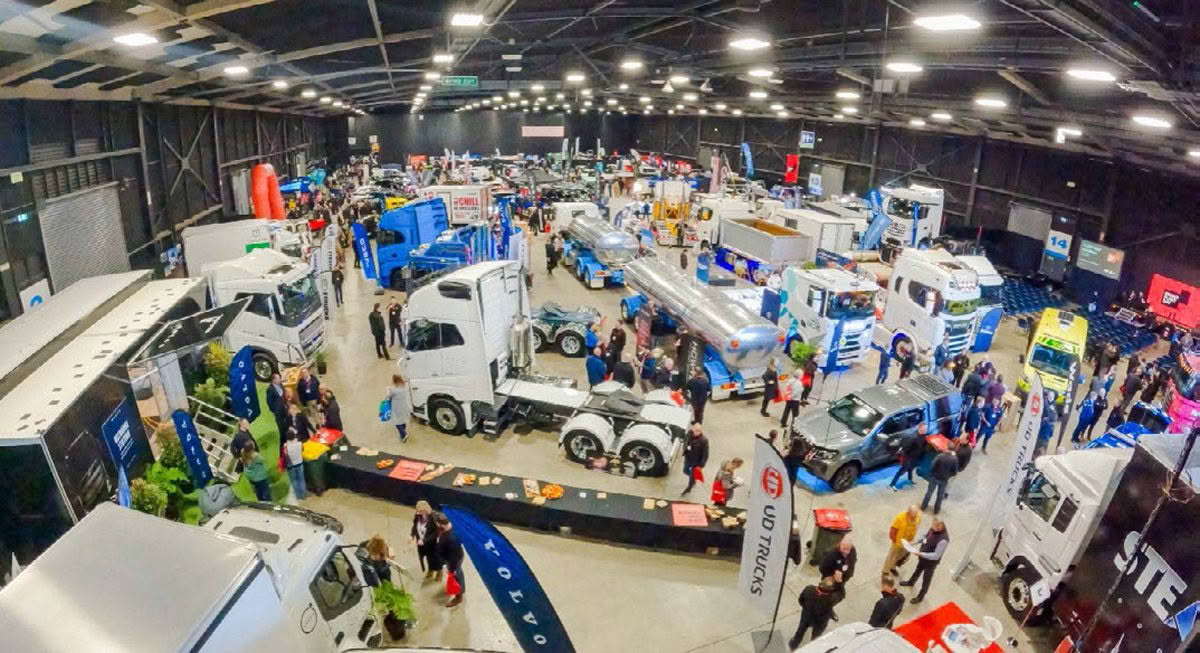
New tech and AI
Sir John Key emphasised the importance of being forward-thinking when it came to new technology such as AI.
Humans often overestimated the short-term impacts of new technology while underestimating the long-term potential, he said.
“AI will be exactly the same. We can’t underestimate how much data AI is going to be able to capture. Data is going to be the new gold. If you think about all the trucks running around, understanding and capturing that data with generative AI, the amount of information we are going to have…”
Sir John further highlighted the importance of data as a critical asset for decision-making and strategic planning. Leveraging fleet data effectively is key to staying ahead, yet as Jacques Ellis of EROAD noted, 48% of light fleets currently don’t use any form of telematics and could be missing out on key optimisation opportunities.
Sir John also discussed New Zealand’s geography and why roads were the answer.
“We are an unusual country in a lot of ways. We’re a small population. Three-quarters of the population live north of Taupō,” he said.
“Trucks are more efficient than rail. Rail works for really long distances. In the United States, rail works because people are going from one coast to another, and they’re going massively long distances, and they’re not getting whatever you are transporting on and off.
“But in New Zealand, where you’re coming into Tauranga Port and you send into the inland port, for example, roading is the way it goes,” Sir John said.
“So, when people get up in Parliament and say we don’t want roads, we don’t want to build roads, they don’t know what they’re talking about. And that’s because of the nature of where people live and the distances we go.
“But there isn’t a solution in New Zealand that doesn’t include roads.”
Technology: a powerful enabler, but not a silver bullet
A highlight of the 2024 Fleet Day was the safety panel, which delved into recent safety developments and the role technology plays in safety. Also on the agenda was why a strong safety culture is essential and why drivers need support systems, proper training and a focus on wellbeing.
The panel featured Lucy Thomas, national health and safety business partner – national transport, Fonterra New Zealand; Greg Murphy, professional racing driver; Steven Jones, road policing supervisor, North Western Waikato; Guy Hocquard, enterprise sales director, EROAD; Paul Phipps, national fleet manager, Fonterra; and Andrew Greatbatch, risk advisory manager, NZI.

Is there a need for speed?
Speed limits were a hot topic in the opening minutes of the panel, with the Government’s plans to scrap the previous government’s speed restrictions a focus.
Greg Murphy said changing speed limits alone was not the answer.
“A lot of us have got used to doing certain speeds in certain environments and we feel that we are okay with that. And I know there’s roads that I drive on frequently that have had speed changes, which I very much feel are inappropriate for those roads,” he said.
“Look at SH5 to Napier. Considering all the work done on the road to then have it put down to 80km/h, I don’t think it was the right call. There’s certainly lots of other bits of roads that do need to be assessed and aren’t fit for purpose for the speed that they are.”
Greg said more training is needed to be done for people driving on New Zealand roads.
“Just changing the speed isn’t necessarily going to give you the outcomes you’re looking for. At the end of the day, speed is a factor in every crash, whether it’s 5km/h or 100km/h, the laws of physics don’t change. We need to have more respect and understanding of that, and that should be part of the learning process of being allowed on our roads.
“It’s a combination of a whole bunch of things that need to come into play, not just speed. It’s about preparation and risk assessment. We can’t do one thing and expect it’s going to be a silver bullet, because there is no such thing.
“The police don’t set the speed limits, but some speed limits are probably not correct. Some roads could be faster if they’re not engineered for slower speeds. And some should be slower if they’re not engineered for fast speeds,” said Steven Jones, road policing supervisor, North Western Waikato.
“Whether they put them up or not, it’s not up to us, but whatever they said, police will enforce it. Don’t you worry.”

Why so distracted?
The safety panel underscored that distraction had become an epidemic, urging all fleets to step up to tackle it. They recognised that while technology was no silver bullet, modern fatigue and distraction detection technology played an important role in combating this issue.
Steven Jones said distracted driving was extremely dangerous.
“Driving is one of the most multitasking things we do as an adult. We’ve got a lot of information coming in, and we need your eyes to be up and forward,” he said.
“People are so connected to their phones. I’ve stopped people that are Snapchatting or filming or making TikToks while they’re driving. It’s infuriating.”
Steven said fines were not enough when it came to phone use in vehicles.
“We should be able to impound their vehicles. The fines aren’t enough. Overseas, they’ve got phone-detecting cameras, and the fines are horrendous. The fines here are pretty minimal, pretty pathetic, and not much of a deterrent. And it’s not only phones, but other distractions within the vehicle as well.”
Guy Hocquard, enterprise sales director, EROAD, said trials of the company’s new AI camera over the past six weeks had been “eye opening”.
“What actually goes on in the cab of a vehicle, understanding how big the risk is, then creating the controls and measures around managing that risk,” he said.
“With speed limits, we clearly see in our data that those organisations that stay within the bounds that have been set are much safer.
“So, understanding the risk first is the biggest thing. If you don’t have telematics or cameras, then you have no idea what you are dealing with.”
Andrew Greatbatch, risk advisory manager, NZI, said that from an insurance perspective, the focus was on how the risk of the driving task could be lowered.
“We take telematics data and produce these easy-to-read, concise driver report cards. When we launched the programme, we thought transport managers would need to use all these punitive tools to get recidivist drivers to slow down. But, in fact, what we found is actually the opposite,” he said.
“Just using those report cards to have a conversation with a driver about the driving task, we think, has more effect than actually the speed zones in which they operate.”
Is technology forcing people to learn?
Guy Hocquard, enterprise sales director, EROAD, said using telematics technology to monitor driver behaviour leads to good outcomes.
“We absolutely see a massive change in behaviour when you increase accountability,” he said.
“Because you’re a bit more protective of your information and driving results when it’s under your name. People respect what you inspect.
“I’ve walked into many kitchens at various trucking organisations where they have very publicly displayed a list of their best drivers to worst drivers using their names.” Greg Murphy said that when using telematics technology, businesses must be prepared to find out things they might not want to know.
“You also have to be prepared to react to it,” he said.
“When you start to investigate and use this technology, you’ve got to then be prepared to react to it. The information that’s gathered, you’ve got to want to use it and effectively put it into practice at the same time.
“And just because a business may have a 100% success rate because nothing’s gone wrong, doesn’t mean it’s not going to go wrong,” Greg added.
“And that’s unfortunately the way a lot of people see it. The fact that they haven’t had a crash or a driver said, ‘I’m fine, I’ve been doing this for 20 years, I’ve never had a crash.’
“That doesn’t mean it’s not going to happen. It doesn’t mean that there’s not an issue, there’s not a problem that can be helped and can be improved.
“And that is how the environment becomes safe. You reduce your risk.”
Greg said distraction was an epidemic.
“And unless we all work together to try and actually make a culture change in that space, it isn’t going to get better,” he said.
“Unfortunately, we are not going to fix it ourselves as humans unless there’s actually a reason to do so, which is either forced upon you or your 100% success rate turns into a fail because something goes wrong.
“It’s for all of us to step up and acknowledge the issues and use the tools. And sometimes we need technology to actually do that because we are not always prepared to do it ourselves.”
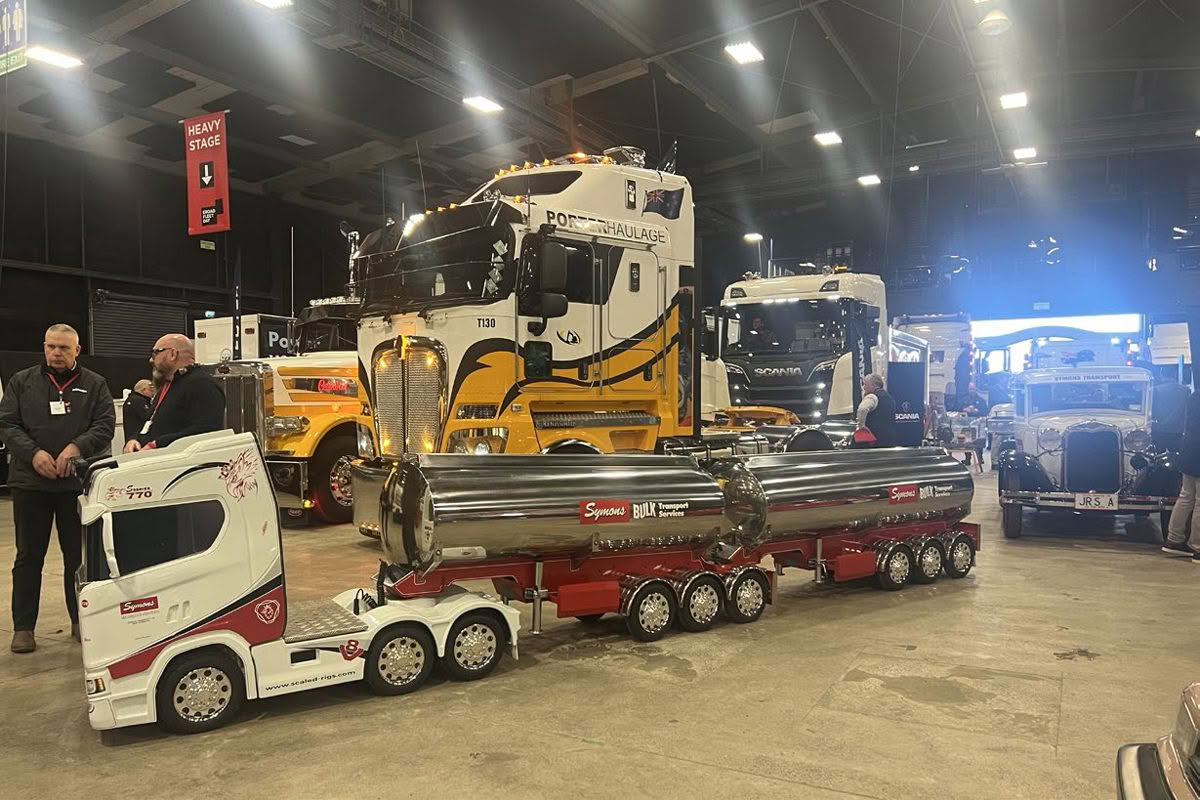
What is a safe driving culture?
Paul Phipps, national fleet manager, Fonterra, said having conversations up front with staff when introducing new technology was key to promoting a good culture across the business.
“Initially, when we were having conversations around putting cameras in trucks, there was a bit of a panic,” he said.
“But with a gently-gently approach, having the conversations up front, and letting your staff know that the technology isn’t there so we can spy on them, it’s just there to make sure that they go home safe to their families.
“And what we actually found out is that we’ve got some great people that do some great stuff all of the time.”
Lucy Thomas, national health and safety business partner – national transport, Fonterra New Zealand, said a safe driving culture was one in which drivers knew their limitations.
“Every driver being able to put their hand up and say, ‘You know what? I’m not fit enough to go and drive that 50-tonne vehicle today.’ And having the wraparound service to say, ‘Yeah, okay, absolutely. We’ll send you home. Go have a good night’s kip and we’ll put someone else in there.’ And that not being an issue,” she said.
“We need to make sure that our guys are in a fit state to be able to drive those vehicles.”
Andrew Greatbatch, risk advisory manager, NZI, said NZI had been running its fleet programme for 15 years, and culture played a big part in successful companies.
“When we think, what do they all have in common? It’s capable and confident leadership,” he said.
“It’s those bosses who walk around the yard, and they can’t walk past the forklift driver without asking how his kids are. It’s the culture of the organisation that really contributes to how accountable those drivers are for behaviour.”
Guy Hocquard, enterprise sales director, EROAD, said everyone had a role to play in ensuring that we all came home safe.
“Data and technology in the vehicle are increasing so much – initially people were reluctant, and they did push back, whereas now most arrive at the point where they know it’s there for their protection and not to spy on them. You are investing a huge amount of time and money in vehicle technology and in everything that wraps around it to make sure that people come home safe. A good driver gets that.”
Greg summarised the topic by saying, “Tech is not a silver bullet. It’s not going to fix all your problems.
“Tech is making a difference and alerting companies to other issues, but a significant factor is still an individual’s attitude towards driving. It’s not going to save you from every situation.”
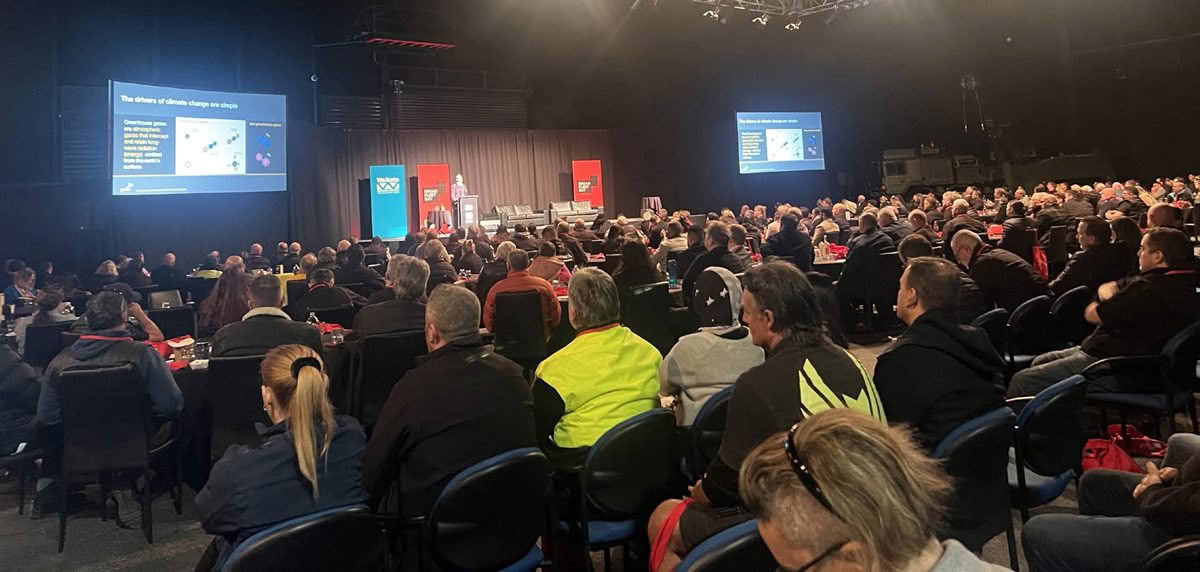
Insights from Fleet Day 2024
Climate reporting: a competitive edge essential to future growth
Andrew Jamieson from PwC spoke about the emissions reporting requirements that have begun to roll out in New Zealand. “While regulation may be behind some of the reporting we’re seeing, it’s clear that changes in consumer demand and investor appetite are also driving businesses to push for sustainability in order to gain a competitive advantage or attract investment,” he said. “And organisations who report on Scope 3 emissions will be looking for transport businesses who can support them to decarbonise their supply chain.”
Fleet technology: upgrade to unlock safety, efficiency and sustainability
Liz Yeaman, consultant, EVs and renewable energy for transport, said fleet optimisation started with measuring actual fleet activity and movements so any decisions made were based on data.
“Fleets may find they have underutilised vehicles and assets, which when sold, can support them to replace well-used vehicles with smarter, more efficient models.”
EV cost: stretch the asset to overcome high depreciation
Affordability and depreciation remain a concern for fleets. However, the challenges can be overcome. With fewer moving parts, EVs have lower servicing needs. Combined with over-the-air updates and advances in battery technology – fleets don’t need to cycle the assets through their fleet as quickly as ICE vehicles, they can ‘stretch the asset’. Rather than a three-year investment, EVs can be considered a five-year-plus investment.
EV market: slowed, but still growing globally
The sustainability panel discussed the impact of economic factors on EV sales such as the removal of the clean car rebate. While sales may have slowed, overall, the market continues to grow globally, and although some traditional car manufacturers have shifted away from EVs, newer companies have stepped in.
AI Dashcam
At the event, EROAD unveiled its new AI-powered dashcam, EROAD Clarity Edge.
With its advanced driver behaviour monitoring capabilities, Clarity Edge aims to help fleets strike the right balance between productivity and driver safety.
In its on-road customer testing, EROAD said that 99% of the events detected by Clarity Edge would never have been detected by traditional telematics.
Mark Heine, co-chief executive officer of EROAD, said AI was the logical next step for safety-conscious fleets.
“What we’re seeing now is fleets striving for that next exponential lift in driver safety, and that is where AI comes in,” he said.
“AI has the ability to detect a far wider range of behaviours such as tailgating, fatigue or mobile use. These are known to be contributing factors to accidents, as well as inefficient driving practices.
“Fleet operators don’t have time to watch thousands of hours of on-road footage, to spot violations. By leveraging advances in AI, we’re able to do that for them. It’s a game- changer for fleet safety and productivity.”
AI can monitor the driver and the road, alerting the driver and fleet manager to potential dangers in real time.
Clarity Edge is an advanced dashcam solution, with integrated road, driver and fatigue AI packages. By monitoring for risky behaviours and alerting drivers in real time, Clarity Edge can help to prevent accidents or reduce their severity.
The combination of the three AI packages, together with EROAD’s existing driver behaviour and fleet management technology, will enable fleet operators to identify and manage a wide range of driver behaviour, including speeding, near misses, mobile use, fatigue and distraction.
EROAD senior product manager, Soumya Puri, said Clarity Edge was a fit-for-purpose solution, having been built from the ground up as an AI camera, with state-of-the-art edge-compute processing.
“As AI models become more complex, they require more processing power from the device itself,” said Soumya.
“Some of the AI-ready cameras in the market today have pretty much maxed out their processing power, limiting future development,” he said.
“Clarity Edge is at the forefront of AI camera technology, with superior processing power. We’re already looking beyond the camera’s current capabilities towards future integrations and enhancements such as additional peripheral cameras.
“AI is rapidly advancing, and EROAD is evolving its platforms and hardware so that customers can leverage those advances sooner rather than later, and in an intuitive way.”











